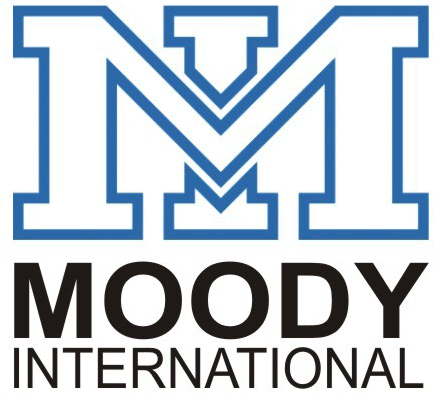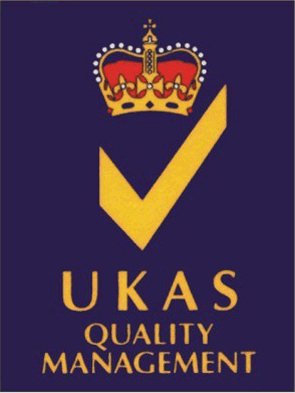| |
| اُردو |
Overview |
|
| Pakistan is the fourth largest cotton producer in the world. Because of its plentiful, indigenous cotton supply, the textile industry is central to the Pakistan's economy and is both a source of employment and a source of exports. |
|
Textile and clothing are the two major industries of Pakistan and contributes about 64% (Federal Bureau of Statistics, August 2006) of the total export. These industries are accounting round about 46% of the total manufacturing and also providing employment to over 28% of the total manufacturing labor force. |
|
History: The Pakistan's textile industry depends on domestic agriculture to supply its raw materials, thus the success of the cotton crop is critical to the health of the textile industry. Cotton accounts for 14 percent of land under cultivation in Pakistan. Pakistan has suffered from a number of cotton failures over the years, beginning in the early 1990s. These crop failures drove up the price of cotton, and this coupled with a market recession and tightened finance regulations led to a weakened textile industry. |
|
Recent Trends in the industry: Pakistan's textile industry is going through one of the toughest periods in decades. The global recession which has hit the global textile really hard is not the only cause for concern. Serious internal issues also effected Pakistan's textile industry very badly. The high cost of production resulting from an instant rise in the energy costs has been the primary cause of concern for the industry. Depreciation of Pakistani rupee during last year which has significantly raised the cost of imported inputs. Furthermore, double digit inflation and energy crises have effected the overall textile sector. |
|
Main reasons of crisis in textile industry in Pakistan:
|
|
1. Lack of Research & development (R&D) in cotton sector:-
The lack of research & development (R&D) in the cotton sector of Pakistan has resulted in low quality of cotton in comparison to rest of Asia. Because of the subsequent low profitability in cotton crops, farmers are shifting to other cash crops, such as sugar cane. In Punjab alone, the cotton area sown this season was less by 1.14 percent as compared to the last year.
|
2. Lack of modernize equipment:-
Moreover, critics argue that the textile industry has obsolete equipment and machinery. The inability to timely modernize the equipment and machinery has led to
the decline of Pakistani textile competitiveness. Due to obsolete technology the cost of production is higher in Pakistan as compared to other countries like India, Bangladesh & China. APTMA has highlighted that the Pakistan textile industry
faces tough competition from the Indian, Bangladeshi and Chinese textile industries and local policies have resulted in Pakistani textiles facing a critical condition.
|
3. Finance Bill to burden industry further:-
All Pakistan Textile Mills Association (APTMA) has told that government's actions
are not matching with its words for the textile industry. Federal
budget 2009-10 is a total negation of the acknowledgement of the role of textile.
|
4. Increasing cost of production:-
The cost of production of textile rises due to many reasons like increasing interest rate, double digit inflation & decreasing value of Pakistani rupee. The increasing interest rate caused barrier in opening new manufacturing units & also increase the production cost of existing units. The value Pakistani rupee is continuously decreasing which increased the cost of imported raw
material. The removal of subsidy & implementation of new taxes from government
also increase the cost of production. The instant increase in cost of electricity also
caused a increase in production. The above all reason increased the cost of production
of textile industry which create problem for a textile industry to compete in
international market.
|
5- Internal issues pose a larger threat for Pakistan's textile industry:-
Pakistan's textile industry is going through one of the toughest period in decades. The global recession which has hit the global textile really hard is not the only cause for concern. Serious internal issues outbreak Pakistan's textile industry. The high cost of production resulting from an instant rise in the energy costs has been the primary cause of concern for the industry. Depreciation of Pakistani rupee during last year raised the cost of imported inputs. In addition, double digit inflation and high cost of financing has seriously effected the growth in the textile industry. Pakistan's textile exports have gone down during last three years as exporters cannot effectively market their products since buyers are not visiting Pakistan due to adverse travel advisory and it is getting more and more difficult for the exporters to travel abroad.
|
6-Energy crisis:
a) Electricity crisis:-
As a consequence of load shedding the textile production capacity of various sub-
sectors has been reduced by up to 30 per cent. The representatives of the all textile
associations presented their serious concerns on the huge losses being incurred due to
electricity load shedding and the instant rise in the Electricity tariff. They said that the
industry has already been crippled due to record loadshedding during winter months.
The joint meeting of All Pakistan Textile Mills Association (APTMA) & other
related organization was held at APTMA House to formulate a joint strategy to
address the alarming electricity crisis being faced by the textile industry. The meeting
unanimously decided to constitute a joint working group of electricity management
for the textile industry in the larger interests of the value chain of the textile industry.
detailed plan to
pursue the following goals; Immediate total exemption from Electricity load shedding
for the textile industry value chain; Rationalization and reduction of electricity tariff.
b) Gas Shortage:-
Gas load-shedding continues in Punjab and NWFP despite a
significant increase in temperature. A spokesman for the All Pakistan Textile Mills
Association claimed that 60 to 70 per cent of the industry had been affected and was
unable to accept export orders coming in from around the globe. He said the textile
industry had already endured over 45 days of gas disconnection over a period of four
months, causing extraordinary production losses and badly affecting capability of the
industry. In Punjab, he said, the textile industry's share was over 60 per cent,
according to APTMA's study energy supply disruption only was causing an estimated
loss of Rs1 billion per day. He regretted that at a time when the export-oriented
industry had ready demand in terms of meeting export orders, the policy-makers
failed to take prudent steps to help ensure timely execution of orders. In the larger
interest of the economy and exports, he suggested, the government should ensure
utility companies provide smooth electricity and gas supply to the textile industry and
accord the industry top priority at this critical time.
|
7- Tight Monetary Policy:-
The continuity of tight monetary policy cause an intensive increase in cost of production. As due to tight monetary policy the interest rate is not consistent & keeps on increasing which increase the cost of production & also the number of debt defaulter. Due to high interest rate financing cost increases which cause a severe effect on production. The withholding tax of 1% also effect the production badly. The high cost of doing business is because of intensive increase in the rate of interest which has increased the problems of the industry. The record increase in markup rates is one of the major cause of defaults in servicing the loans availed by the industry, hence, the volume of non-performing loans has reached to an alarming situation. The government should take immediate measures to remove slowdown in the textile sector.
|
8- Removal of subsidy on Textile sector:-
The provisions of Finance Bill 2009-10 are not textile industry friendly at all.
Provisions like reintroduction of 0.5% minimum tax on domestic sales, 1%
withholding tax on import of textile and articles, 16% Federal Excise Duty on
banking and insurance services besides withdrawal of exemption of 16% sales tax and
4% withholding tax on machinery and parts in the Finance Bill 2009-10 are nothing
but last strick on industry's back.
|
9- Lack of new investment:-
Pakistan textile industry is facing problem of Low productivity due to its obsolete
textile machineries. To overcome this problem and to stand in competition, Pakistan
Textile Industry will require high investments. Pakistan is on the road to invest in
processing sector, but traditional sector are also demanding high amount of
investments. There is a continuous trend of investing in spinning since many
years. Pakistan's textile industry estimates that around Rs1, 400 billion (US$32
billion) of investment was required till 2010 in order to achieve the government's
export target."
|
10- United States & EU cuts imports of textile from Pakistan:-
United States cancel more than 50% of textile
orders of Pakistan .US also impose a high duties on the import of textile of Pakistan
which effect the export in a bad manner. US & EU are the major importer of Pakistan
textile which creates a huge difference in export of Pakistan textile after imposing a
restriction on import of Pakistani textile goods.
|
11- Raw material Prices:-
Prices of cotton & other raw material used in textile industry fluctuate rapidly in Pakistan. The rapid increase in the price raw material effects the cost of production badly. The increase in raw material prices fluctuate rapidly dur to double digit inflation & instable internal condition of Pakistan. Due to increase in the cost of production the demand for export & home as well decreased which result in terms of downsizing of a firm. Hence the unemployment level will also increase. Govt should take serious step to survive the textile industry. In order to decrease the price raw material for textile we need to increase our production capability.
|
12- Export Performance of the Textile Sector:-
For the second year in a row, the country missed annual textile export target of 12
billion dollars by 20 percent due to high cost of production, power shortage and stiff
competition with regional players. The federal government envisaging 15 percent
growth had set textile export target of 12 billion dollars for FY09 against 10.35 billion dollars for FY08.
The central bank has also revealed that out of 12 major textile export 9 registered
negative growth and export of only three items - raw cotton, bed wear and towels has
posted some increase. With 18.34 percent decline, readymade garments exports stood
at 983 million dollars and knitwear export at 2.054 billion dollars after a decline to 4
percent in FY09.
|
13- The Effect of Global Recession on Textile Industry:-
Pakistan is 26th largest economy in the world, and 47th largest in terms of the
dollar. It is sad to see our economy like this now. Pakistan is actually a very
economically diverse country with boasting industries of textiles, agriculture, etc.
The main reason for this slump has largely been the political instability over the past
few years; no proper economic policies were implemented; at least none that
succeeded. This caused a very high rate of inflation, which, in 2008, had increased to
a whopping 25% as compared to a 7.9% of 2006. In addition to this, we already had a
negative balance of payments, with the quantity of imports outstripping the quantity
of exports.
|
14-Effect of Inflation
Inflation rate is measured as the change in consumer price index (CPI).Inflation is
basically a general rise in the price level. It is decline in the real value of money. Inflation
can have adverse effect on economy. Pakistan is one of prey of inflation. It still faces high
double digit inflation.
The increase in inflation cause the increase in the cost of production of
textile good which return in downsizing. The double digit inflation cause reduction in
exports of textiles.
|
|
|






